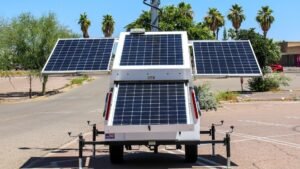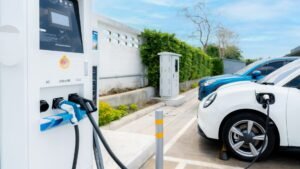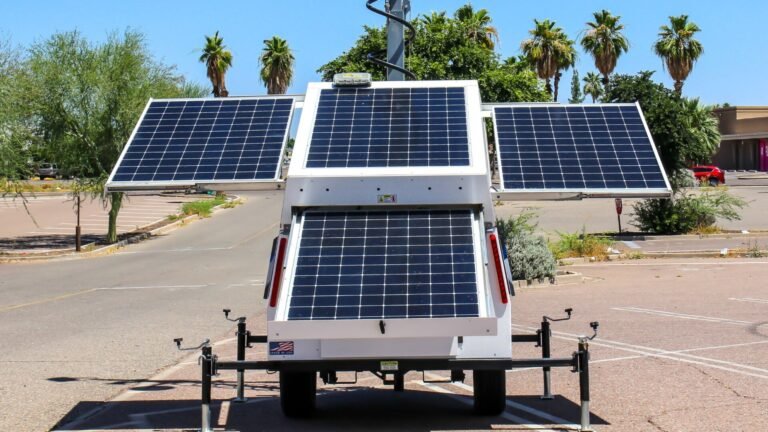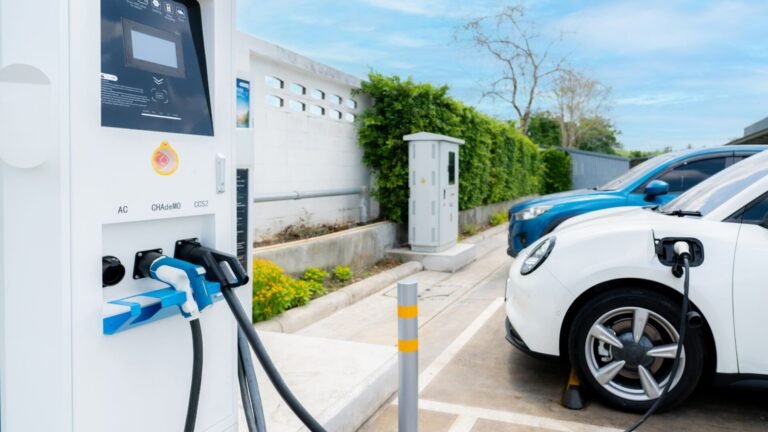The relationship between solar panels and their efficiency in different weather conditions is a subject of significant interest and research within the renewable energy sector.
Specifically, N-type solar panels have been a topic of discussion due to their unique properties and performance characteristics, especially in cold weather conditions.
This blog explores whether N-type solar panels and cold weather are indeed a perfect match, delving into the nature of these panels, their efficiency in colder climates, challenges, and potential solutions.
Understanding N-type Solar Panels
N-type solar panels are named after the N-type semiconductor used in their construction. Unlike the more common P-type, N-type semiconductors are made with silicon that has been doped with elements that provide extra electrons, resulting in a negative charge.
This fundamental difference in construction results in several key advantages: N-type solar panels typically exhibit less light-induced degradation, have higher efficiency rates, and maintain better performance over time compared to their P-type counterparts.
Performance of N-type Solar Panels in Cold Weather
Cold weather conditions pose a unique set of challenges and opportunities for solar panel performance. Interestingly, solar panels, including N-type, generally perform better in colder temperatures due to the physical properties of semiconductors.
In cold weather, the electrical resistance of a solar panel decreases, which can lead to higher electrical output.
N-type solar panels, in particular, benefit from this effect due to their high-quality silicon and efficient electrical properties, potentially making them a perfect match for cold weather conditions.
However, the performance also depends on other factors such as sunlight availability and snow coverage.
In regions with long winters and short days, the reduced sunlight can limit the overall energy production, despite the improved efficiency due to cold temperatures.
Advantages of N-type Solar Panels in Cold Climates
N-type solar panels offer several advantages that make them particularly well-suited for cold climates:
- Enhanced Efficiency: N-type cells typically have higher efficiency rates than P-type cells, which means they can convert more of the available sunlight into electricity, even during the shorter daylight hours of winter.
- Reduced Temperature Coefficient: N-type solar panels often have a lower temperature coefficient than P-type panels. This means their performance decreases less as the temperature rises, and consequently, they can maintain higher performance levels in cold conditions.
- Longevity and Durability: The materials and construction of N-type solar panels can lead to longer lifespans and better performance over time, which is beneficial in regions experiencing harsh winter conditions.
Challenges and Solutions
Despite their advantages, the deployment of N-type solar panels in cold regions is not without challenges:
- Snow Coverage: Heavy snow can cover panels and significantly reduce or even halt energy production. Solutions include installing panels at steeper angles to encourage snow to slide off and using automated cleaning systems.
- Limited Sunlight: Shorter days in winter months result in less sunlight for energy production. This can be mitigated by optimizing the orientation and tilt of the solar panels to capture maximum sunlight.
- Initial Cost: N-type solar panels can be more expensive initially than P-type panels. However, their longer lifespan and higher efficiency can result in better long-term savings. Government incentives and financing options can also help offset the initial costs.
Case Studies and Real-world Applications
Several case studies highlight the effective use of N-type solar panels in cold climates. For instance, a project in the Scandinavian region, known for its harsh winters, demonstrated that N-type panels outperformed traditional P-type panels in terms of energy production and efficiency during the winter months.
Furthermore, in North America, residential and commercial installations in cold-weather states have shown that N-type solar panels maintain high performance and provide reliable energy output throughout the winter season.
Future Prospects and Developments
As technology advances, N-type solar panels continue to evolve. Innovations in materials and manufacturing processes are expected to further enhance their efficiency and reduce costs.
Moreover, the development of new technologies, such as bifacial panels that can capture sunlight from both sides, promises to improve the viability and performance of N-type solar panels in cold weather even more.
Conclusion: Are N-type Solar Panels and Cold Weather a Perfect Match?
In conclusion, N-type solar panels exhibit several characteristics that make them well-suited for cold weather conditions.
Their higher efficiency, lower temperature coefficients, and durability enable them to perform reliably and efficiently in cold climates.
While challenges such as snow coverage and limited daylight hours exist, solutions and best practices can mitigate these issues.
The combination of N-type solar panels and cold weather does indeed seem to be a perfect match, offering a promising solution for renewable energy generation in colder regions.
As the technology continues to improve and become more accessible, we can expect to see an increase in the adoption of N-type solar panels in cold climates, contributing to a more sustainable and resilient energy future.
In summary, N-type solar panels represent a significant advancement in solar technology, particularly suitable for regions with cold weather.
Their adoption not only aligns with global efforts to combat climate change through increased use of renewable energy but also addresses the specific challenges and needs of colder regions.
As we continue to embrace and refine this technology, the synergy between N-type solar panels and cold climates is poised to play a crucial role in the global energy landscape.






